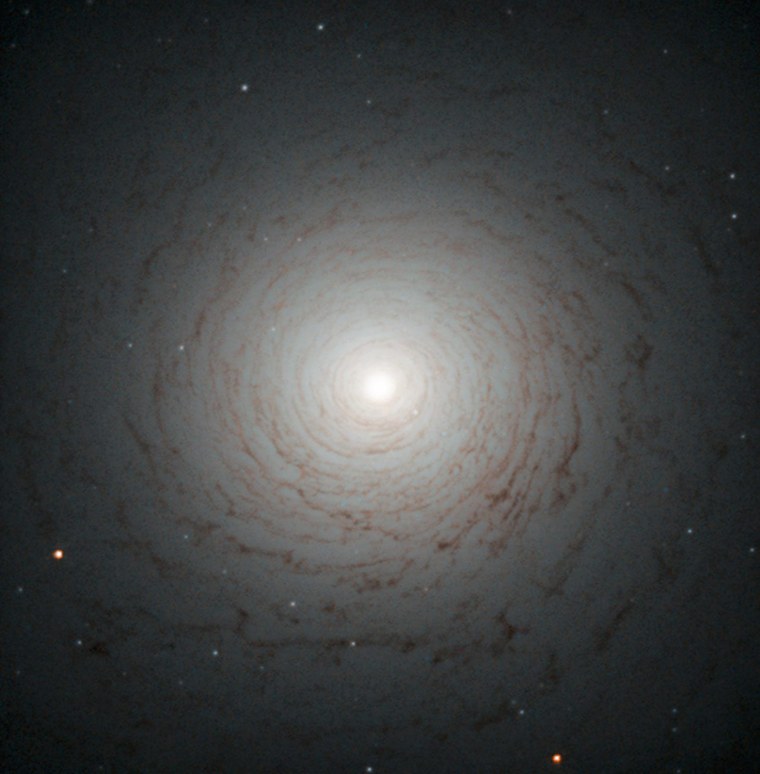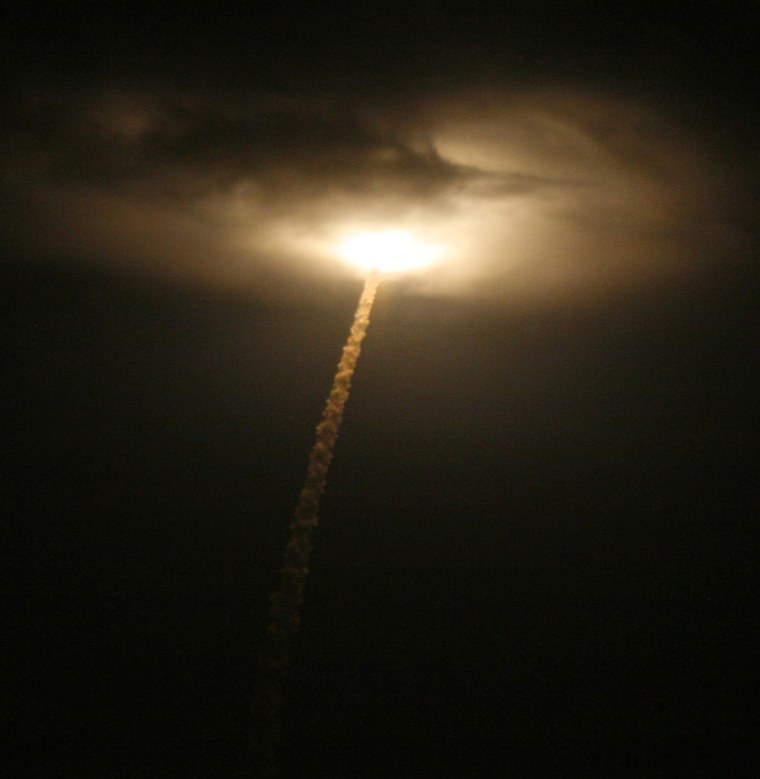IE 11 is not supported. For an optimal experience visit our site on another browser.
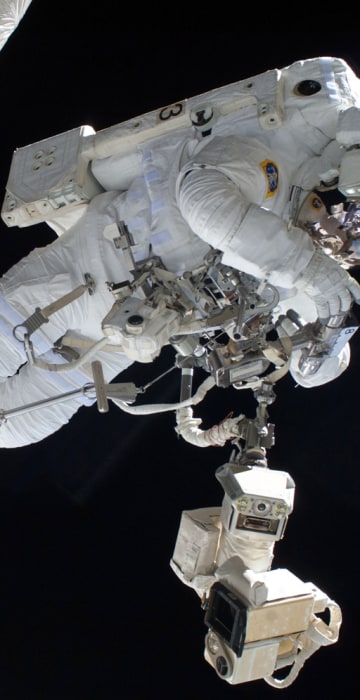
Science News
Month in Space: July 2013
Savor the beauties of a dying star, our lively planet and other cosmic highlights from July 2013.
/ 18 PHOTOS

Spacewalker at work
ISS036-E-016630 (9 July 2013) --- Anchored to a Canadarm2 mobile foot restraint, European Space Agency astronaut Luca Parmitano, Expedition 36 flight engineer, participates in a session of extravehicular activity (EVA) as work continues on the International Space Station. During the six-hour, seven-minute spacewalk, Parmitano and NASA astronaut Chris Cassidy (out of frame), flight engineer, prepared the space station for a new Russian module and performed additional installations on the station's backbone.
— 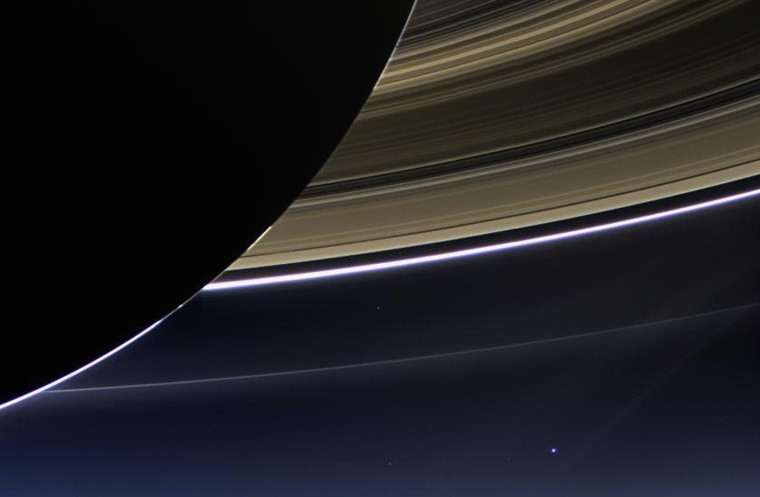
Tiny blue dot
Saturn's rings and our planet Earth and its moon are seen in this image taken by the wide-angle camera on NASA's Cassini spacecraft July 19, 2013. Earth, which is 898 million miles (1.44 billion km) away in this image, appears as a blue dot at center right; the moon can be seen as a fainter protrusion off its right side. REUTERS/NASA/JPL-Caltech/Space Science Institute/Handout via Reuters (OUTER SPACE - Tags: SCIENCE TECHNOLOGY) ATTENTION EDITORS - THIS IMAGE WAS PROVIDED BY A THIRD PARTY. FOR EDITORIAL USE ONLY. NOT FOR SALE FOR MARKETING OR ADVERTISING CAMPAIGNS. THIS PICTURE IS DISTRIBUTED EXACTLY AS RECEIVED BY REUTERS, AS A SERVICE TO CLIENTS
— Nasa / X00653
Bigger blue dot
epa03772347 Visitors walk past globe-like display showing Africa at Japan's national museum of emerging science and innovation Miraikan in Tokyo, Japan, 03 July 2013. The Geo-Cosmos, the symbol exhibit of Miraikan, produces a rendition of the Earth shining brightly in space with a super high precision exceeding 10 million pixels. It is the world's first \"Globe-like display\" using organic LED panels, the museum said. EPA/KIMIMASA MAYAMA
— Kimimasa Mayama / EPA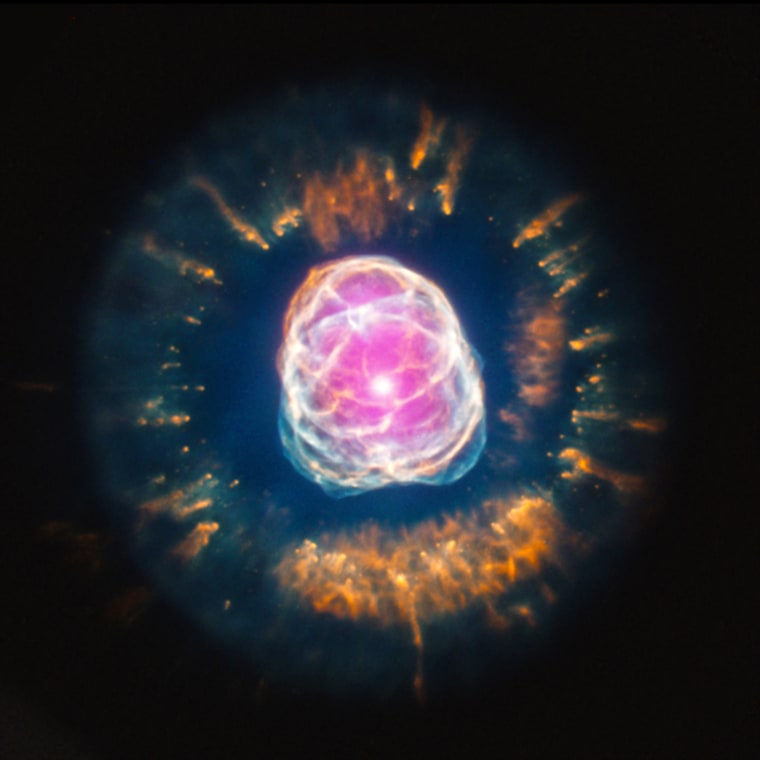
A beautiful death
When a star like our Sun uses up all of the hydrogen in its core, it becomes what is called a \"planetary nebula.\" During this stage, the star begins to cool and expand, increasing its radius by tens to hundreds of times its original size. Eventually, the outer layers of the star are swept away by a slow and thick wind, leaving behind a hot core. The radiation from the hot star and the interaction of its fast wind with the slower wind creates the complex and filamentary shell of a planetary nebula. This composite image of NGC 2392 contains X-ray data from Chandra in pink showing the location of million-degree gas near the center of the planetary nebula. Data from the Hubble Space Telescope - colored red, green, and blue - show the intricate pattern of the outer layers of the star that have been ejected.
— Chandra X-ray Observatory Center / Chandra X-ray Observatory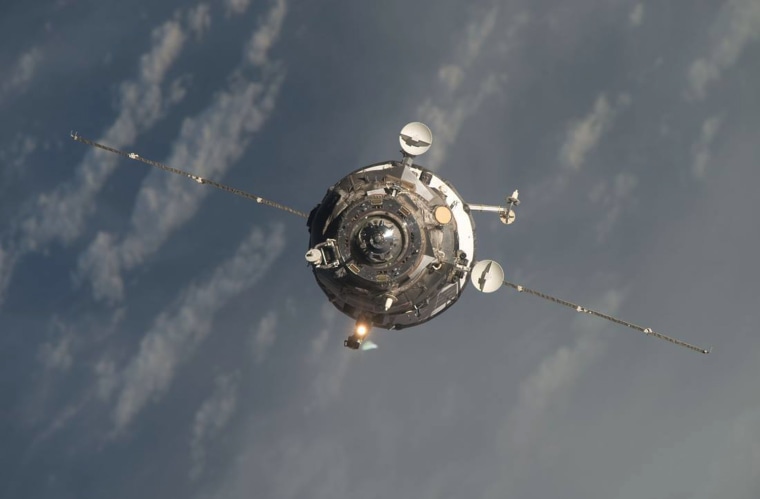
You can't stop Progress
Progress M-20M has arrived at the International Space Station after a flawless four-orbit Rendezvous, docking to the Pirs Module at 2:26 UTC on Sunday. The spacecraft was launched aboard a Soyuz-U rocket on Saturday at 20:45 UTC and completed a busy six-hour rendezvous sequence featuring a number of burns and maneuvers to link up with the Space Station to make its delivery of 2,366 Kilograms of cargo.
— 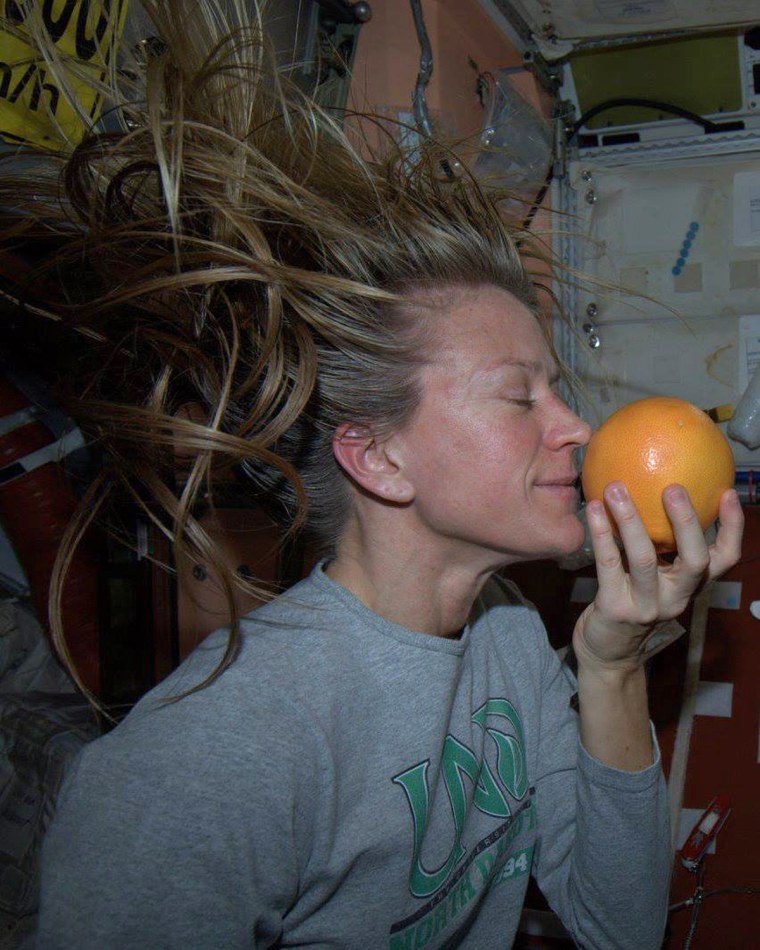
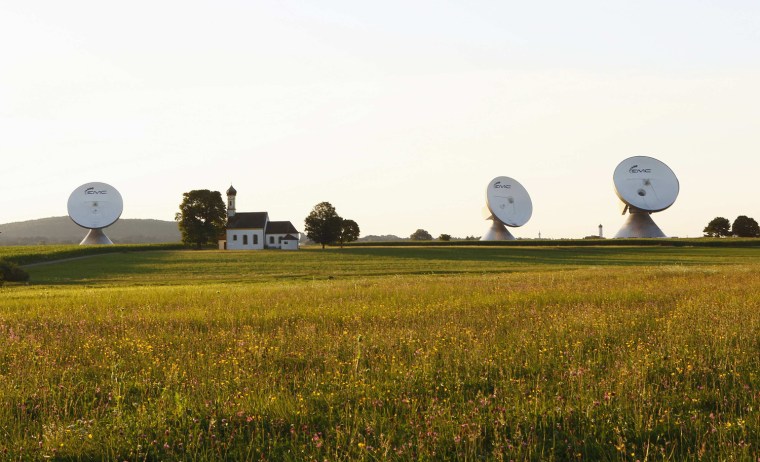
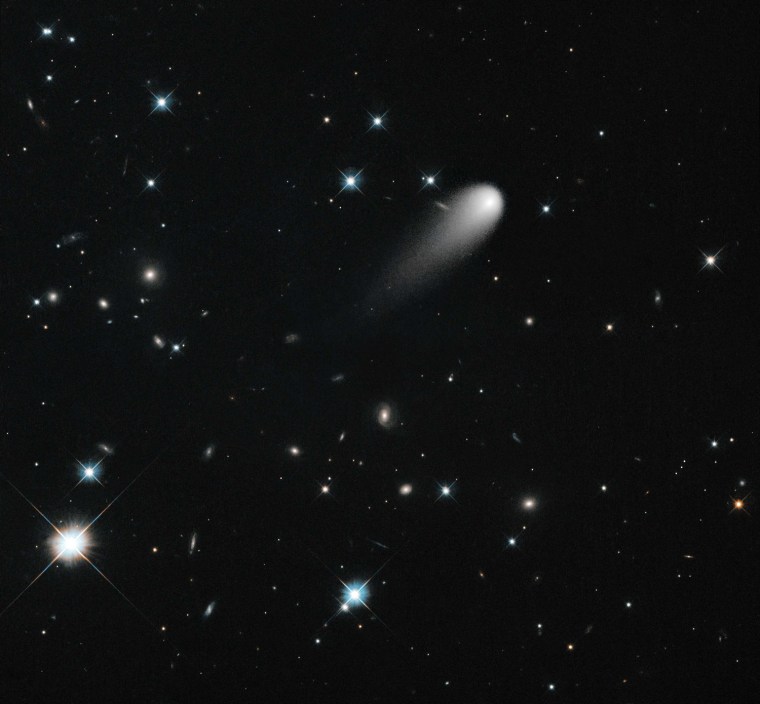
Headed our way
The sun-approaching Comet ISON floats against a seemingly infinite backdrop of numerous galaxies and a handful of foreground stars in this April 2013 composite image from the Hubble Telescope. Astronomers slated to meet this week to discuss observing plans for Comet ISON may not have much to talk about. The so-called \"Comet of the Century\" may already have fizzled out. \"The future of comet ISON does not look bright,\" astronomer Ignacio Ferrin, with the University of Antioquia in Colombia, said in a statement on July 29, 2013. The icy visitor, with its long gossamer tail, appears to be swimming like a tadpole through a deep pond of celestial wonders.
In reality, the comet is much, much closer. The nearest star to the Sun is over 60,000 times farther away, and the nearest large galaxy to the Milky Way is over thirty billion times more distant. These vast dimensions are lost in this deep space Hubble exposure that visually combines our view of the universe from the very nearby to the extraor
— Nasa / X00653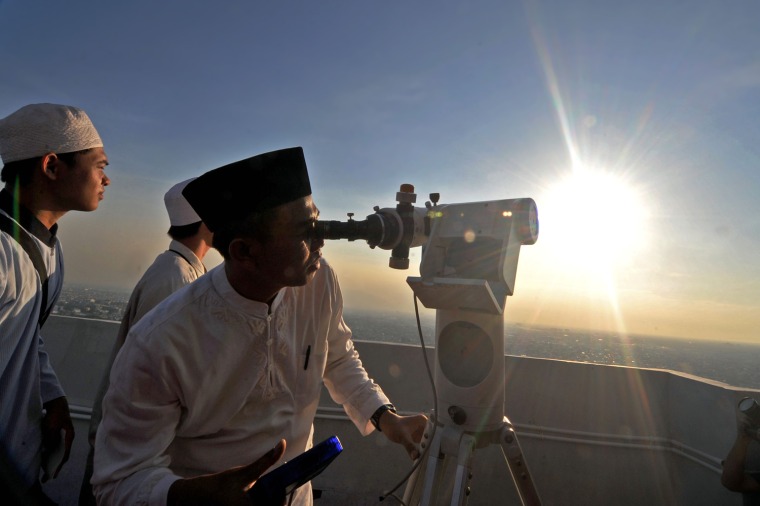
Looking for the moon
July 8, 2013 - Jakarta, Indonesia - Indonesian muslims looks for the crescent of the moon through a telescope ahead of the holy fasting month of Ramadan. The beginning of Ramadan is determined by the appearance of the crescent moon. (Credit Image: © Agung Kuncahya B/Xinhua/ZUMAPRESS.com)
— Agung Kuncahya B / Xinhua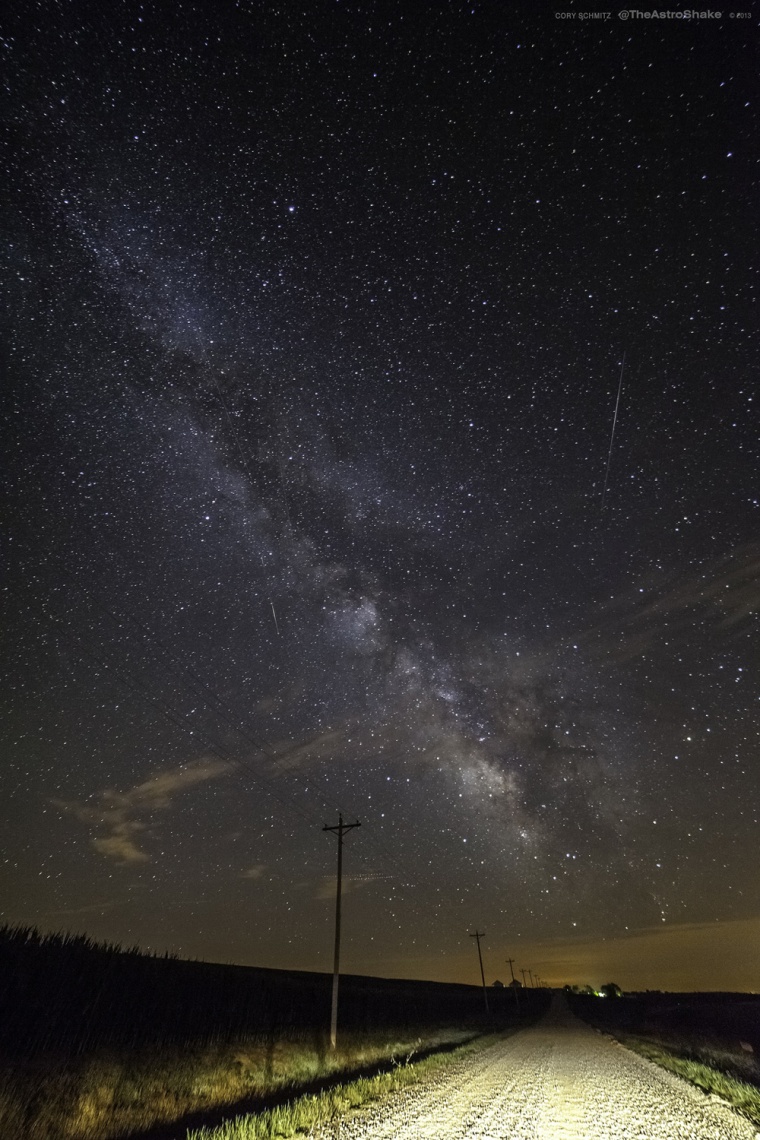
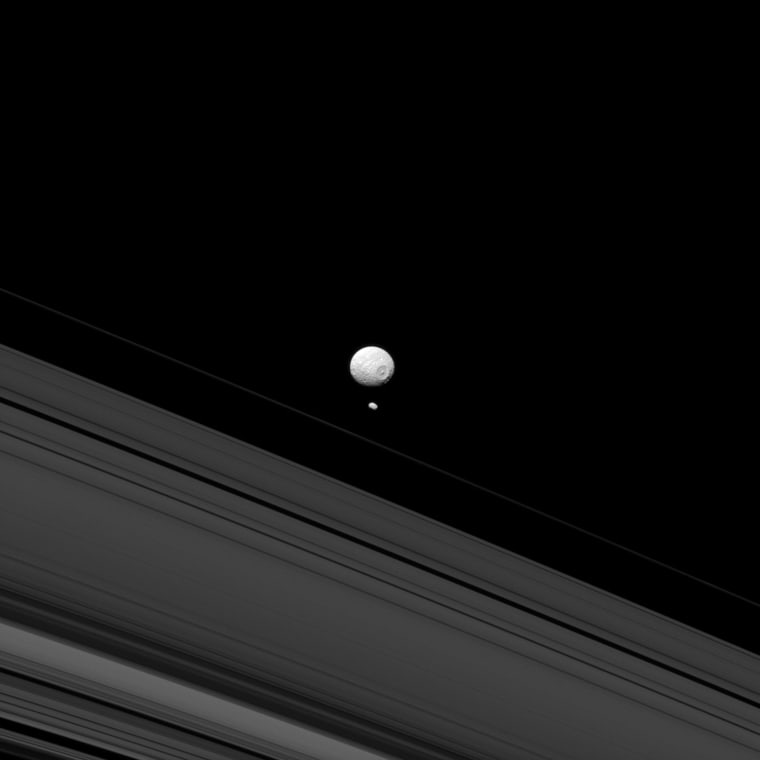
Two moons
epa03807643 An undated handout photo made available by NASA on 30 July 2013 shows the Saturn moons Mimas (top) and Pandora (botton) reminding us of how different they are when they appear together, as in this image taken by NASA's Cassini spacecraft. NASA in its accompanying description of the image says: Pandora's small size means that it lacks sufficient gravity to pull itself into a round shape like its larger sibling, Mimas. Researchers believe that the elongated shape of Pandora (50 miles, or 81 kilometers across) may hold clues to how it and other moons near Saturn's rings formed. This view looks toward the anti-Saturn hemisphere of Mimas (246 miles, or 396 kilometers across). North on Mimas is up and rotated 28 degrees to the right. The image was taken in blue light with Cassini's narrow-angle camera on May 14, 2013. The view was acquired at a distance of approximately 690,000 miles (1.1 million kilometers) from Mimas. Image scale is 4 miles (7 kilometers) per pixel. Pandora was at a distance o
— Nasa/jpl-caltech/space Science I / NASA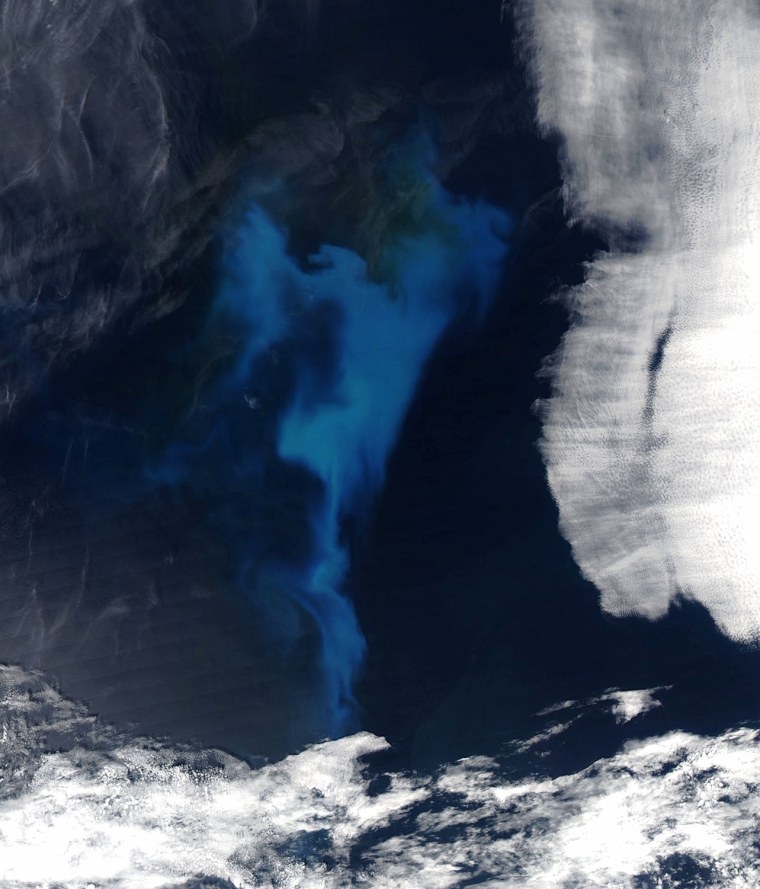
Blue bloom
This July 23, 2013 NASA Auqua satellite image shows Phytoplankton blooming in the North Atlantic Ocean. The waters of the North Atlantic rank among the worlds most productive fisheries. The reason for the abundance is an ample supply of phytoplankton, the base of the marine food chain. Plankton blooms spanning hundreds or even thousands of kilometers occur across the North Atlantic and Arctic Oceans every year. Many species thrive in the cooler ocean waters, which tend to be richer in nutrients and plant life than tropical waters. AFP PHOTO / HO / NASA == RESTRICTED TO EDITORIAL USE / MANDATORY CREDIT: \"AFP PHOTO / NASA / NO SALES / NO MARKETING / NO ADVERTISING CAMPAIGNS / DISTRIBUTED AS A SERVICE TO CLIENTS == HO/AFP/Getty Images
— Ho / AFP
Guitar hero
Retired Canadian astronaut Chris Hadfield performs during Canada Day celebrations on Parliament Hill in Ottawa July 1, 2013. Canadians are celebrating their country's 146th birthday. REUTERS/Chris Wattie (CANADA - Tags: SCIENCE TECHNOLOGY TRANSPORT ANNIVERSARY ENTERTAINMENT)
— Chris Wattie / X90141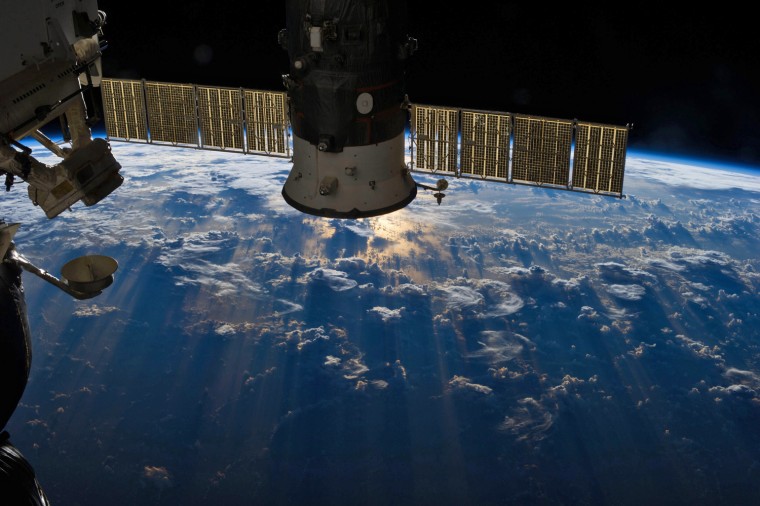
Over the clouds
epa03781615 A handout image dated 04 July 3013 and made available by NASA, showing an image of a large mass of storm clouds over the Atlantic Ocean near Brazil and the Equator, photographed by one of the Expedition 36 crew members aboard the International Space Station using a 50mm lens. A Russian spacecraft, docked to the orbiting outpost, partially covers a small patch of sunglint on the ocean waters in a break in the clouds EPA/NASA / HANDOUT EDITORIAL USE ONLY
— Nasa / Handout / NASA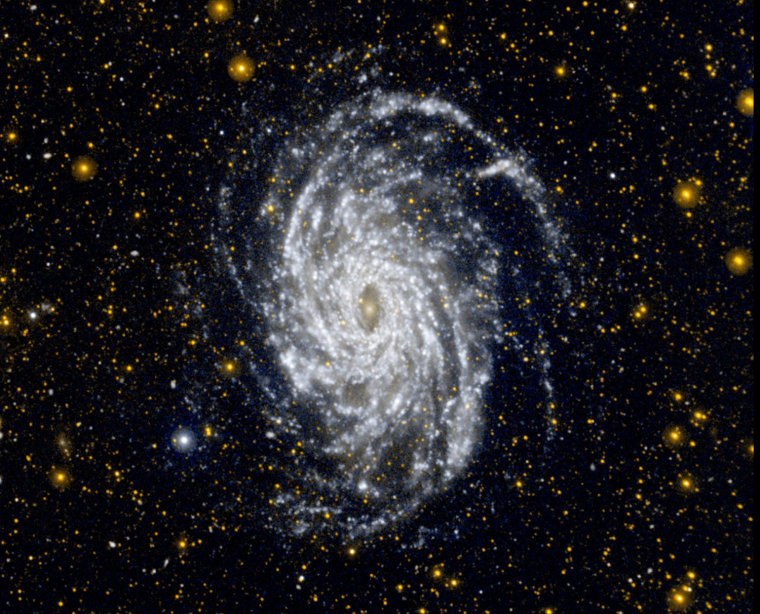
Spiral farewell
This image obtained on July 4, 2013 from NASA's Galaxy Evolution Explorer shows NGC 6744, one of the galaxies most similar to our Milky Way in the local universe. This ultraviolet view highlights the vast extent of the fluffy spiral arms, and demonstrates that star formation can occur in the outer regions of galaxies. The galaxy is situated in the constellation of Pavo at a distance of about 30 million light-years. NGC 6744 is bigger than the Milky Way, with a disk stretching 175,000 light-years across. A small, distorted companion galaxy is located nearby, which is similar to our galaxy's Large Magellanic Cloud. This companion, called NGC 6744A, can be seen as a blob in the main galaxy's outer arm, at upper right. AFP PHOTO / NASA/JPL-Caltech == RESTRICTED TO EDITORIAL USE / MANDATORY CREDIT: \"AFP PHOTO / NASA/JPL-Caltech / NO MARKETING / NO ADVERTISING CAMPAIGNS / DISTRIBUTED AS A SERVICE TO CLIENTS ==HO/AFP/Getty Images
— Ho / AFP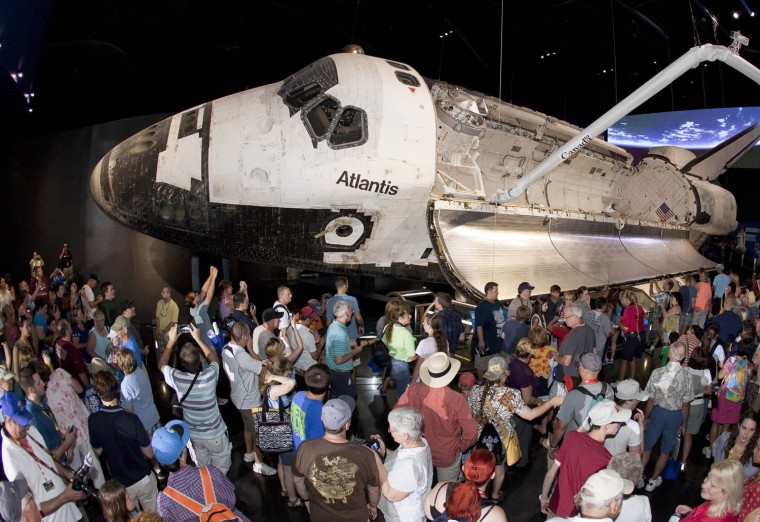
Atlantis found
Visitors view the space shuttle Atlantis on the opening day of its exhibit at the Kennedy Space Center Visitor Complex in Cape Canaveral, Florida June 29, 2013. The developers of the exhibit have raised the 150,000-pound (68,000 kg) spaceship 30 feet (9 meters) into the air and tilted it 43 degrees over on its left side, simulating the vehicle in flight. REUTERS/Mike Brown (UNITED STATES - Tags: SCIENCE TECHNOLOGY TRAVEL SOCIETY)
— Mike Brown / X008631/18
